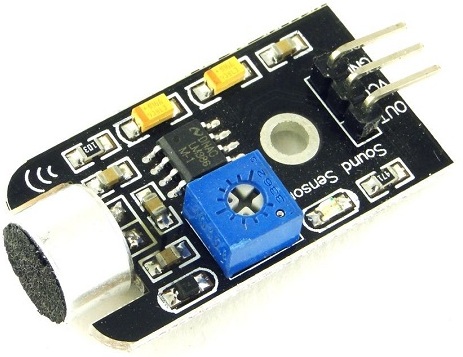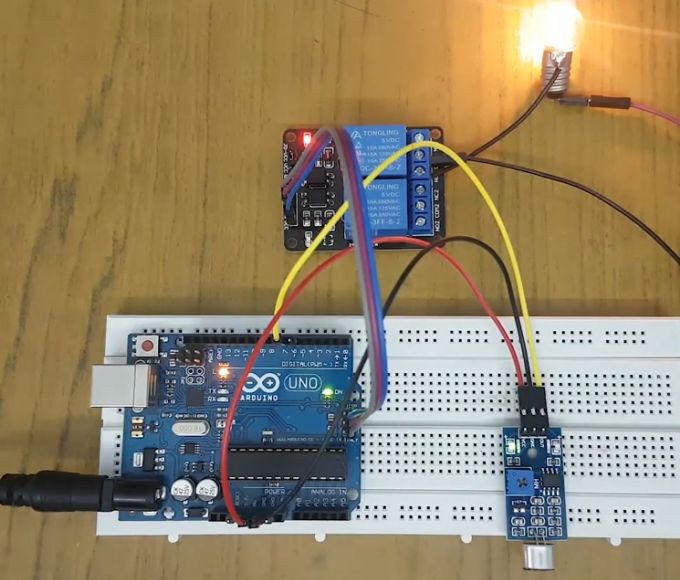Categories: How does it work
Number of views: 972
Comments on the article: 0
How sound sensors are arranged and work (noise sensors)
A sound or noise sensor is usually used in conjunction with fixtures, so that when popping, the sound of voice or steps, or simply in the presence of noise, light is lit in the room. The light can be turned on and stayed on constantly, or for a limited period of time, or for as long as the sensor “hears” steps, noise, or voice, that is, while at least one person is walking around the room, equipment is working, or someone is talking .
This solution can not only reduce lighting costs, it also provides a flexible and convenient automated approach to controlling the on and off lights. Sound (noise) sensors are distinguished by the ability to adjust the sensitivity of the microphone, therefore, they enable the user to make fine adjustments to a certain volume (recognized as a signal to action) of sound.
Sensors working on this principle appeared on sale at the end of the last century, they could often be found in security and alarm systems. These sensors are relevant today. Only now they are more accurate, allow less false positives, in general - have become more perfect, because the electronic base over the past 20 years has taken a big step forward.
As you might have guessed, the sensitive element of the sound sensor is a microphone with a preamplifier. The signal from the microphone is fed to the amplifier, which is responsible for turning on (turning off) or not turning on (not turning off) the controlled electronics, designed to carry out a working action on the signal, depending on the parameters of the captured sound.

The sensor, as a complete device, also includes other parts of the circuit that are responsible for analyzing the signal from the microphone.
If the noise level exceeds the threshold preset by the settings, then, for example, the light will turn on for 1 minute. If after this for 1 minute no sounds corresponding to the level of sensor response follow, the light will be automatically turned off. But if only a sufficiently loud sound is heard during the timer counted down by the timer, the countdown will start again and the light will continue to light up without extinguishing.
Typically, such sensors are installed in entrances, in vestibules, in public restrooms, in shaded rooms of some warehouses, etc. They work perfectly with all types of lamps: incandescent, LED, fluorescent. In addition, sound sensors are popular in burglar alarm systems, when the transfer of control to a more complex security system can be a working action.

Fundamentally, the action of a system with such a sensor can be implemented according to one of two popular algorithms. First: when you catch a sufficiently loud sound, it turns on (for example, the light in the room turns on in the dark). Second: after a certain time interval after the last sound, the device turns off (the light automatically turns off when there is silence in the room).
Thus, energy savings are achieved due to the timely damping of light when there are no more people in the room, or due to the inclusion of light only when there is not enough natural light. In short, energy savings are achieved here through the wise use of lamps.
The system usually works like this. Upon receipt of a signal that a loud sound was heard in the room (coughing, steps, clapping, etc. - the sensitivity is adjusted by a potentiometer on the sensor board), the sensor turns on the actuator, and the external time switch starts to count down (the period is set by the settings that does the user in his system), after which the device will be turned off. There may be no time relay in the system.
Those who used these sensors with arduino noted their low cost, a fairly wide radius of action of these devices, as well as the direction of perception of the condenser microphone.
The name of the sensor usually indicates the type of amplifier that stands on its board.It is noteworthy that the outputs here are both analog and digital (only analog or analog or analog and digital).
There are sound sensors with a built-in photo relay and an adjustable analog output. There are also sensors that record only the presence or absence of sound in the room. One way or another, choosing a sound (noise) sensor, you should pay attention to its following characteristics: the presence / absence of a photo relay, range, sensitivity, frequency range, current consumption.
I recommend to read more:
See also at i.electricianexp.com
:
